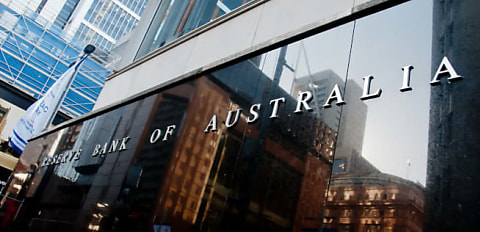The chance of a pause on 7 February in the cash rate hiking spree wasn’t an option, according to the Reserve Bank of Australia (RBA)’s monetary policy minutes released on Tuesday (21 February).
The central bank’s meeting minutes gave an insightful overview of a range of international and domestic factors affecting the decision but having ‘no rise’ wasn’t on the agenda.
Lifting by 25 bps was a stronger case than needing to lift by 50 bps, for a range of reasons, it confirmed.
Though global inflation remained very high, it looked to have peaked, while goods inflation had slowed noticeably in many advanced economies, the RBA noted. Services inflation remained high, though.
Other influences included the “reversal in COVID-19-containment policy” in China in mid-December 2022, plus the “synchronised global tightening in monetary policy”, high energy prices, and cost-of-living pressures.
Housing markets were substantially weaker and had led the downturn in activity in several countries, it explained.
The RBA said its members acknowledged that the global outlook was “subject to a number of uncertainties” and there were “plausible scenarios for both stronger and weaker growth and inflation than expected.”
Domestically, members observed that inflation was “high and broadly based” at the end of 2022. With headline inflation having reached 7.8 per cent over the year to the December quarter, trimmed mean inflation was 6.9 per cent over the same period and thus “higher than had been expected.”
The central bank added that while global inflationary pressures had started to ease, this had “yet to translate here.”
An easing in inflation was expected over the months ahead, strong domestic demand in some areas was continuing to push up prices, it confirmed.
Additionally, CPI rent inflation had increased further in response to tight rental market conditions; by contrast, inflation in new dwelling construction costs had continued to moderate from high rates, it stated.
Why the decision was made
Given much of the above and a range of other wages, unemployment, services demand, and supply chain influences, the RBA board agreed that “a further increase in interest rates was warranted.”
The recent inflation data “had suggested more breadth and persistence in inflation than had been expected” and that “strong demand was leading to price increases in some parts of the economy,” it highlighted.
It added that while inflation was expected to decline, there was “a risk that it could persist at an uncomfortably high level,” which would “entail longer term costs,” it confirmed.
Members also noted that the cash rate was lower than policy rates in many other comparable economies, it stated.
Interestingly, while wages growth “remained lower here than elsewhere”, Australia’s positive exposure to higher commodity prices and the “extra savings buffers accumulated by households” were estimated to be larger than in other countries, it summarised.
That stated, there were also notable differences in fiscal policy and population growth around the globe, it conceded.
Impact to the average Australian
The cash flow channel of monetary policy was stronger in Australia than in other countries, given the high level of variable-rate debt, the board members had observed.
However, they also resolved that — accounting for all the channels of monetary policy transmission — there was “little evidence to suggest that the overall impact of monetary policy on activity and inflation in Australia was materially different than elsewhere.”
In that context, the board effectively ruled out a ‘pause’ and considered two options for its policy decision: a 50-bp increase or a 25-bp increase, it confirmed.
“The arguments for a 50 basis-point increase stemmed from the concern that there had been a pattern of incoming prices and wages data exceeding expectations, and a risk that high inflation would be persistent,” it stated.
“If it did persist, there would be significant costs, including higher interest rates and a larger increase in unemployment later on.
“Relatedly, members observed that the longer inflation stayed high, the greater the risk of price and wage expectations moving higher.”
Conversely, the arguments for a 25-bp increase also “recognised the need to bring demand and supply in the economy more into balance” but noted that inflation was expected “to have reached its peak.” Thus, the outlook was for “a softening in consumption growth” and that there were “many uncertainties around the outlook.”
All bases and scenarios covered
While underlying inflation had been higher than previously forecast, headline inflation was below earlier expectations, the RBA outlined.
Overall, the forecast was for inflation to fall within the target range by the end of the forecast period in mid-2025, it reiterated.
“Many households were facing tighter budgets and, in aggregate, real incomes were falling,” it said.
“There were plausible scenarios in which consumption growth was weaker than expected and inflation fell faster than forecast, as well as scenarios in which the opposite occurred.”
Board members acknowledged that there were arguments in favour of both options but concluded that “the case to increase the cash rate by 25 basis points at the present meeting was the stronger one.
It documented: “With interest rates already having been adjusted substantially, there was less need to move by 50 basis points at this meeting.
“Members noted that the forecasts for output and inflation had been prepared on the technical assumption of the cash rate reaching around 3.75 per cent.
“Consistent with this, members agreed that further increases in interest rates are likely to be needed over the months ahead to ensure that inflation returns to target and that the current period of high inflation is only temporary.”
[Related: Switch banks to ‘put pressure on them’, RBA reminds Aussies]
